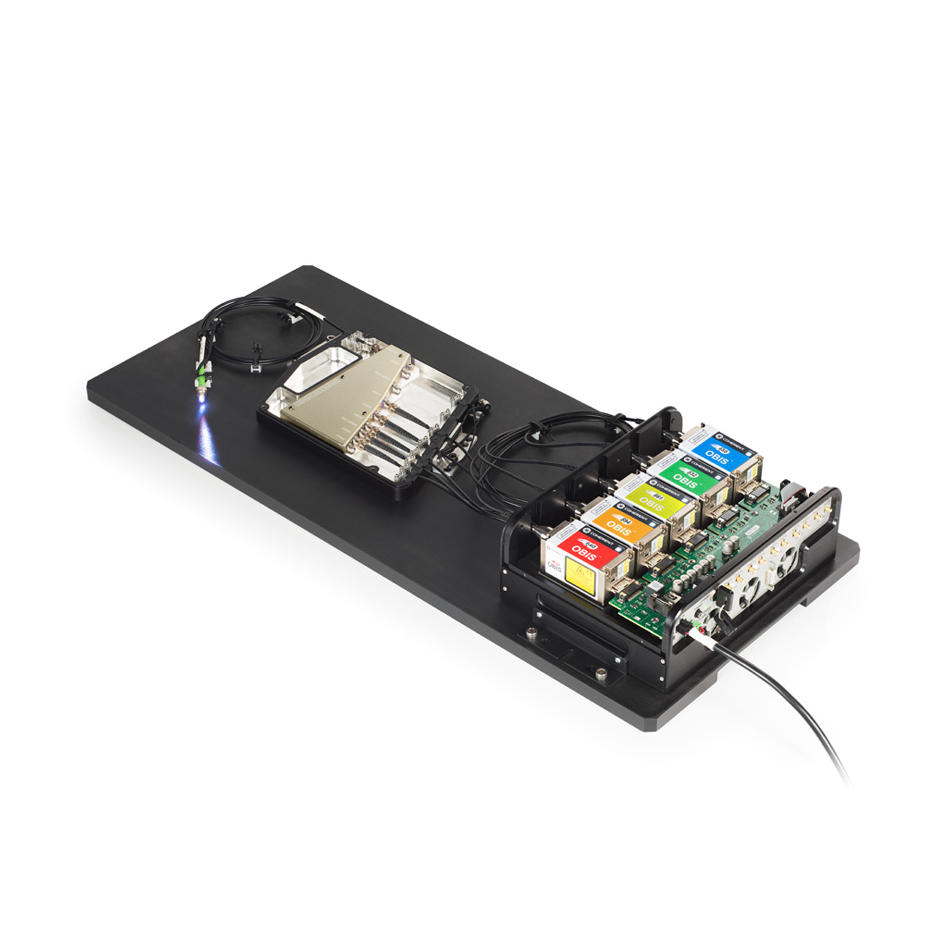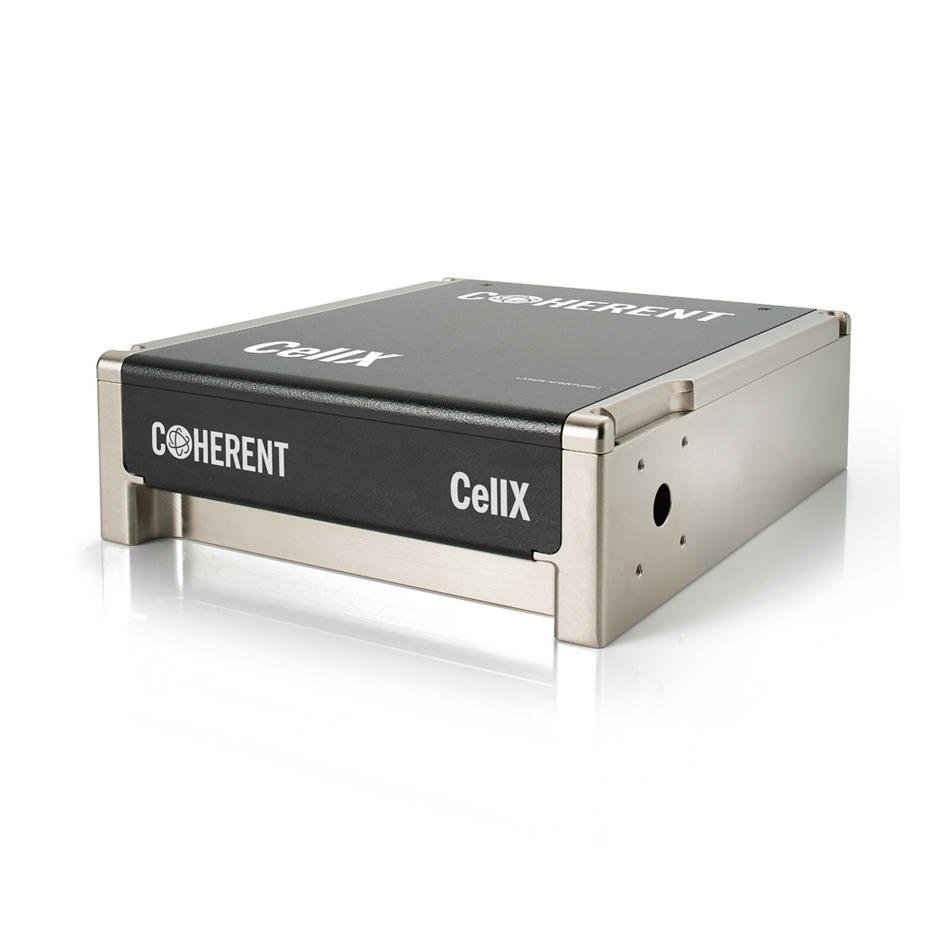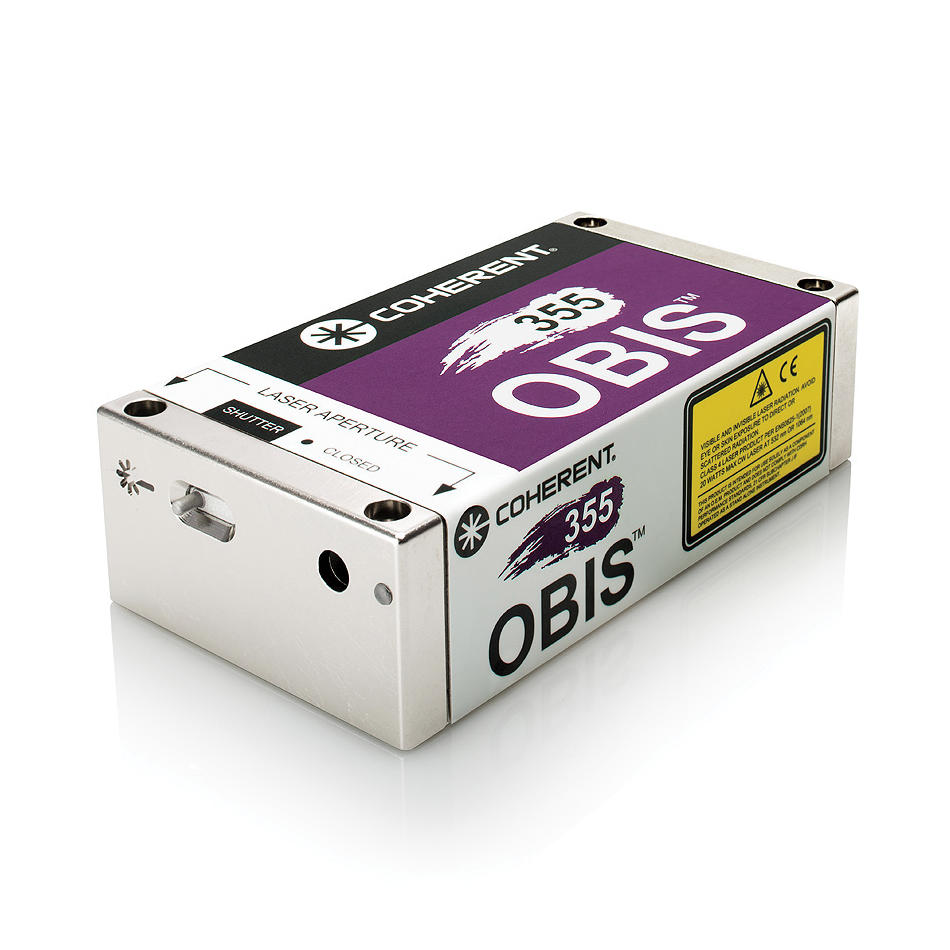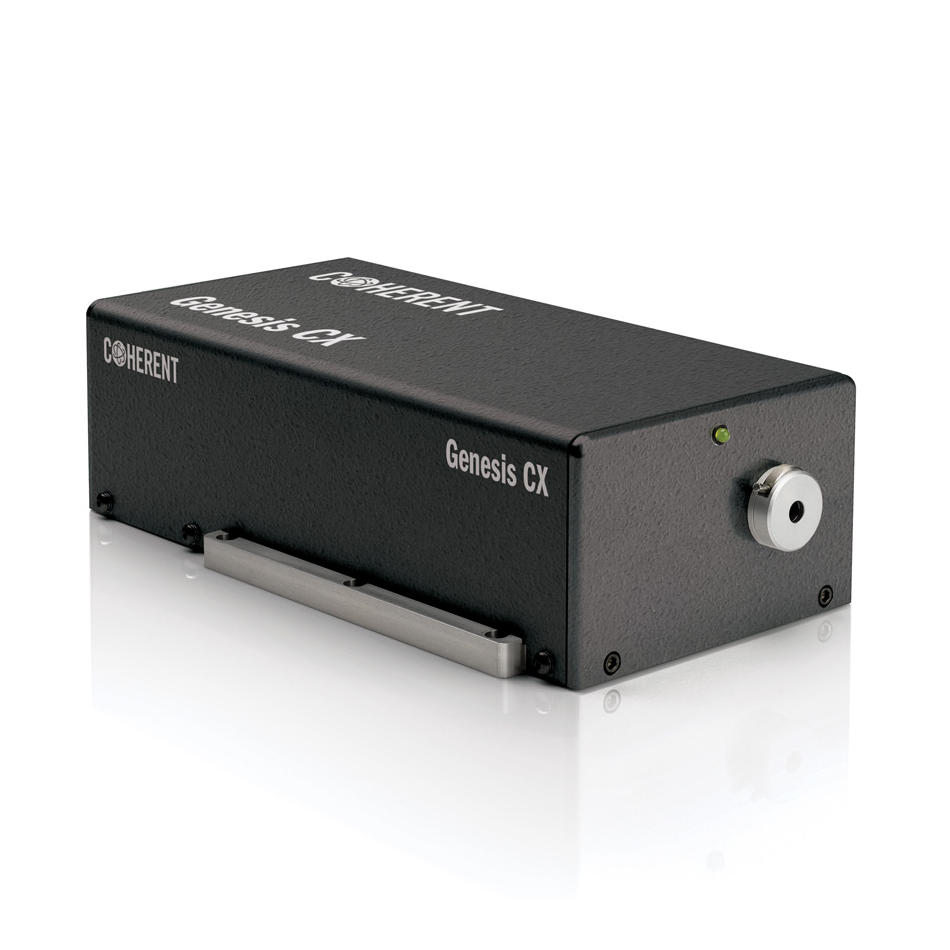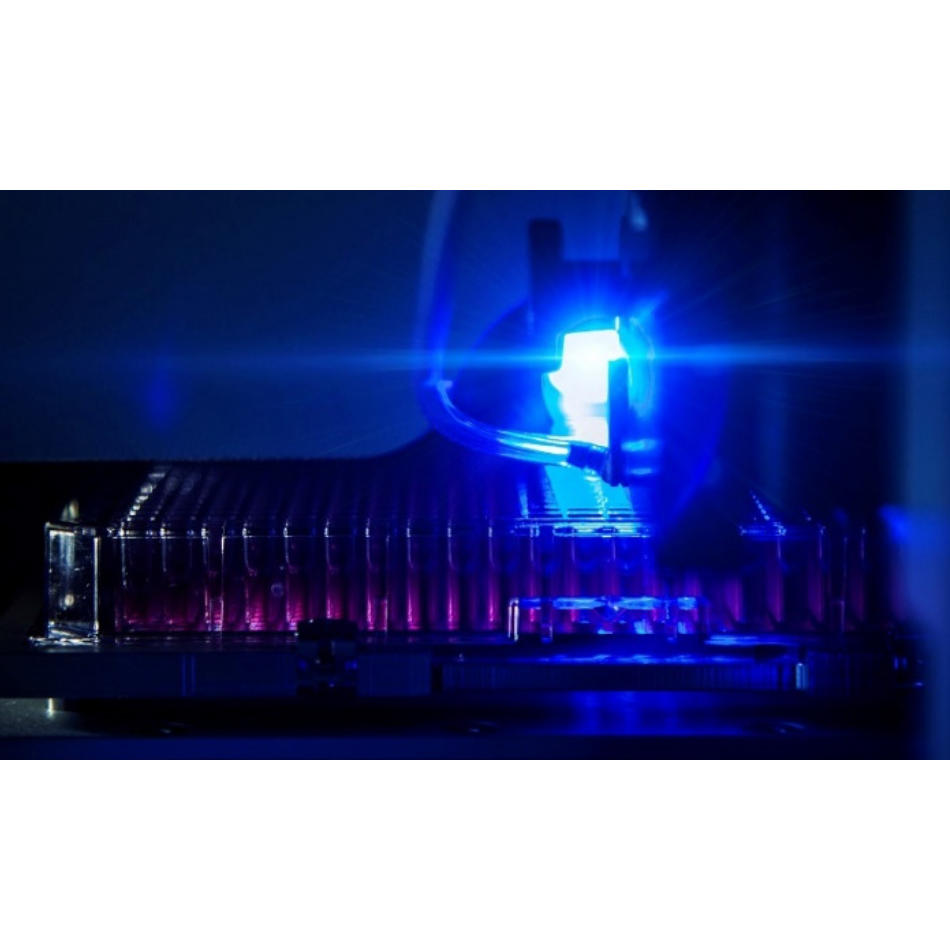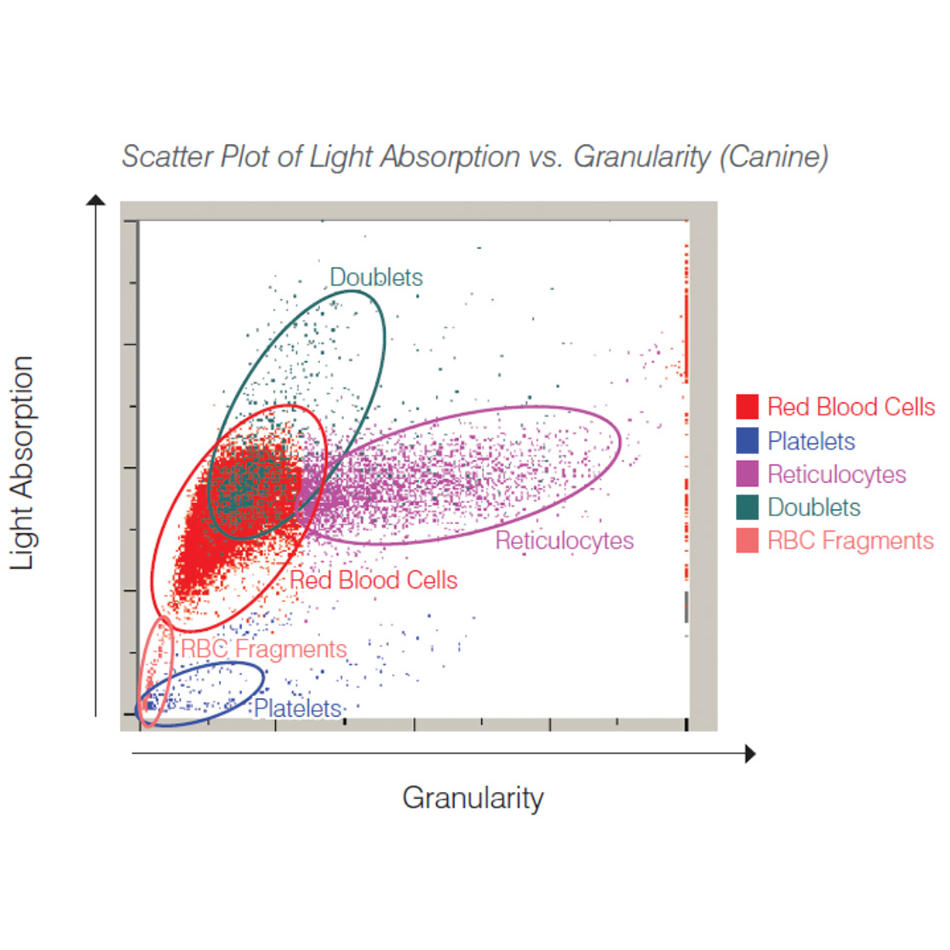Wie Durchflusszytometrie-Laser Ihr Blut untersuchen
Sehen Sie, wie Laser DIE zentrale Rolle bei der Blutzellenzählung und der Durchführung normaler Bluttests einnehmen.
27. Juli 2021 von Coherent
Sie lassen sich in der Arztpraxis oder im Krankenhaus Blut abnehmen und erhalten irgendwann später das Ergebnis. Das Blutbild gibt die Werte der roten Blutkörperchen, weißen Blutkörperchen, Blutplättchen und anderer Bestandteile des Blutes an.
Haben Sie sich jemals gefragt, wie diese Werte ermittelt werden? Wussten Sie, dass Laser eine Schlüsselrolle bei der Erfassung dieser Daten einnehmen können? Wir werden uns das jetzt genauer ansehen.
Mit dem Fluss gehen
Das Blutbild wird mit einer Methode namens Durchflusszytometrie ermittelt. Was ist das? Das Blut fließt dabei durch ein Laserinstrument und „Zyto“ bedeutet „Zelle“ und „metrie“ bedeutet „messen“.
Das Blut wird zunächst in eine Zentrifuge gegeben, wo durch Aufkonzentrieren viel Flüssigkeit entfernt wird, denn von Interesse sind die Zellen. Dann wird es mit mehreren, als Fluorochrome bezeichneten Chemikalien behandelt.
Diese Fluorochrome nehmen zwei wichtige Rollen ein. Erstens heften sie sich an bestimmte Proteine an der Oberfläche der Blutkörperchen. Diese Proteine ähneln den Spitzen des COVID-19-Virus, von dem in letzter Zeit so viele Bilder zu sehen waren. Dabei ist wichtig zu wissen, dass jede Art von Fluorochrom nur an einer bestimmten Art von Zielprotein haften kann. Bestimmte Blutzellentypen sind mit vielen Stacheln eines bestimmten Proteins bestückt, andere hingegen möglicherweise mit gar keinen.
Nützliches Einfärben
Der zweite wichtige Punkt ist, dass Fluorochrome Licht emittieren, wenn sie von einem Laserstrahl getroffen werden. Und sie emittieren darüber hinaus Licht einer ganz bestimmten Farbe – und zwar nur dieser Farbe – wenn sie von einem Laserstrahl getroffen werden. Das ist wirklich nützlich.
Da die verschiedenen Fluorochrome in bestimmten Mengen an verschiedenen Zelltypen haften und jedes Fluorochrom Licht einer anderen Farbe abgibt, entsteht eine für jeden Zelltyp unverwechselbare Farbkombination. Und auf dieser Grundlage kann das Instrument sie unterscheiden.
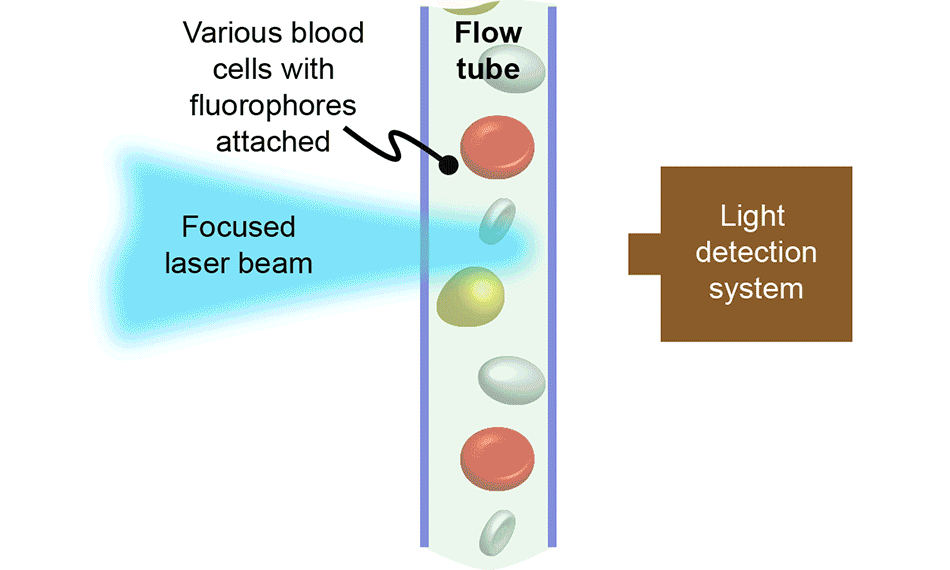
In einem Durchflusszytometer passieren die Blutzellen einzeln nacheinander eine oder mehreren Laserstrahlen. Die von jeder Zelle abgegebene Menge und Farbe des Lichts wird gemessen. Aufgrund der spezifischen Farbkombination und Lichtintensität ermittelt das Instrument den Zelltyp.
Eine nach der anderen
Beim Test wird die chemisch behandelte, konzentrierte Blutprobe in das Durchflusszytometer gegeben und durch eine winzige Düse geführt, in der die Zellen gezwungen sind, sich hintereinander in den Strom einzuordnen.
Ein Laserstrahl oder mehrere verschiedenfarbige Laserstrahlen werden auf die Zellen gerichtet und die Zellen emittieren wie oben beschrieben Licht. Das Instrument ist mit mehreren Lichtdetektoren versehen, die durch Filter auf das Erfassen nur einer einzigen Farbe ausgerichtet sind. Sie messen das von der Zelle abgegebene Licht und das System analysiert die Farbkombination, um den Zelltyp zu ermitteln.
Das Gerät ermittelt die Gesamtzahl der Zellen pro Typ und berechnet dann, wie viele genau in einem Milliliter Blut enthalten sind. Das ist dann das Blutbild.
Ein ziemlich guter Zytometrielaser
Die OBIS-Laser von Coherent finden sich in mehr Durchflusszytometern als jeder andere Laser, denn sie weisen eine Reihe von Vorteilen auf, die sie zu einer hervorragenden Ergänzung für diese Instrumente machen. Erstens sind sie in vielen verschiedenen Farben (Wellenlängen) erhältlich. Das ist wichtig, da jedes Fluorochrom so gestaltet ist, dass es nur auf Laserlicht einer bestimmten Farbe reagiert. Mit einer größeren Anzahl verschiedener Laserfarben lassen sich also eine größere Auswahl an Fluorochromen einsetzen. Es lassen sich also mehr Zelltypen unterscheiden und zählen – und das alles in einem einzigen Durchlauf.
Außerdem ist der Ausgangsstrahl von OBIS-Lasern von so hoher Qualität, dass er bessere Messergebnisse (geringeres Rauschen) mit höherer Taktung ermöglicht – bei jedem Durchgang durch ein einzelnes Zytometer und sogar zwischen verschiedenen Instrumenten. Außerdem ermöglicht dieser hochwertige Strahl das korrekte Zählen von Zellen selbst dann, wenn sie sich nicht genau in der Mitte des Stroms befinden. Damit löst OBIS wichtige Probleme, die ansonsten den Blutdruck von Instrumentenherstellern und Anwendern in die Höhe schießen lassen könnten.
Also, wenn die Nadel das nächste Mal reingeht, entspannen Sie sich. Laser werden einen Weg zu einer besseren Gesundheit ebnen.
Verwandte Ressourcen


